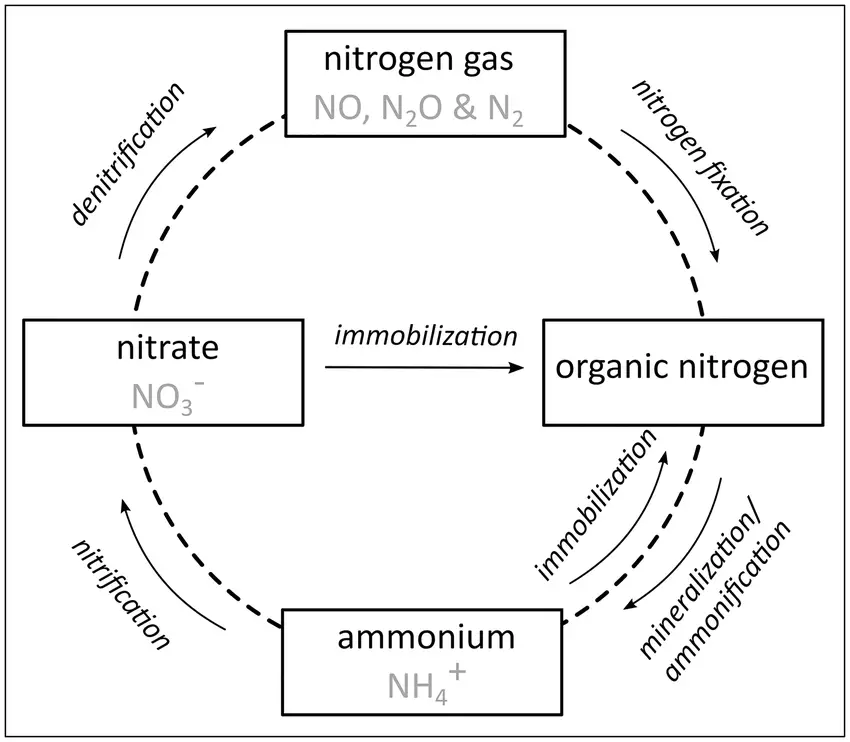Draw Nitrogen Cycle and Explain Biological Nitrogen Fixation
Nitrogen Cycle Overview
The nitrogen cycle describes the natural processes by which nitrogen is converted between its various chemical forms in the environment. This transformation allows nitrogen to be available for plants and animals to use. The key stages of the nitrogen cycle include nitrogen fixation, nitrification, assimilation, ammonification, and denitrification.

Major Steps:
- Nitrogen Fixation: Conversion of atmospheric nitrogen (N₂) to ammonia (NH₃) by bacteria.
- Nitrification: Conversion of ammonia to nitrites (NO₂⁻) and then to nitrates (NO₃⁻).
- Assimilation: Plants absorb nitrates from the soil and use them to synthesize proteins.
- Ammonification: Decomposition of organic nitrogen back to ammonia.
- Denitrification: Conversion of nitrates back to nitrogen gas by denitrifying bacteria.
Biological Nitrogen Fixation
Biological nitrogen fixation is the process where atmospheric nitrogen (N₂) is converted into ammonia (NH₃) by specific microorganisms, making nitrogen accessible to plants. This is crucial because most organisms cannot use atmospheric nitrogen directly.
Microorganisms Involved
- Free-living bacteria: Azotobacter, Clostridium
- Symbiotic bacteria: Rhizobium species, which form nodules in legume roots
Mechanism
The enzyme nitrogenase catalyzes the reaction under anaerobic conditions:
N₂ + 8H⁺ + 8e⁻ + 16 ATP → 2NH₃ + H₂ + 16 ADP + 16 Pi
Nitrogen fixation is energy-intensive and tightly regulated. It enables plants to grow in nitrogen-poor soils and enhances agricultural productivity through natural fertilization.
